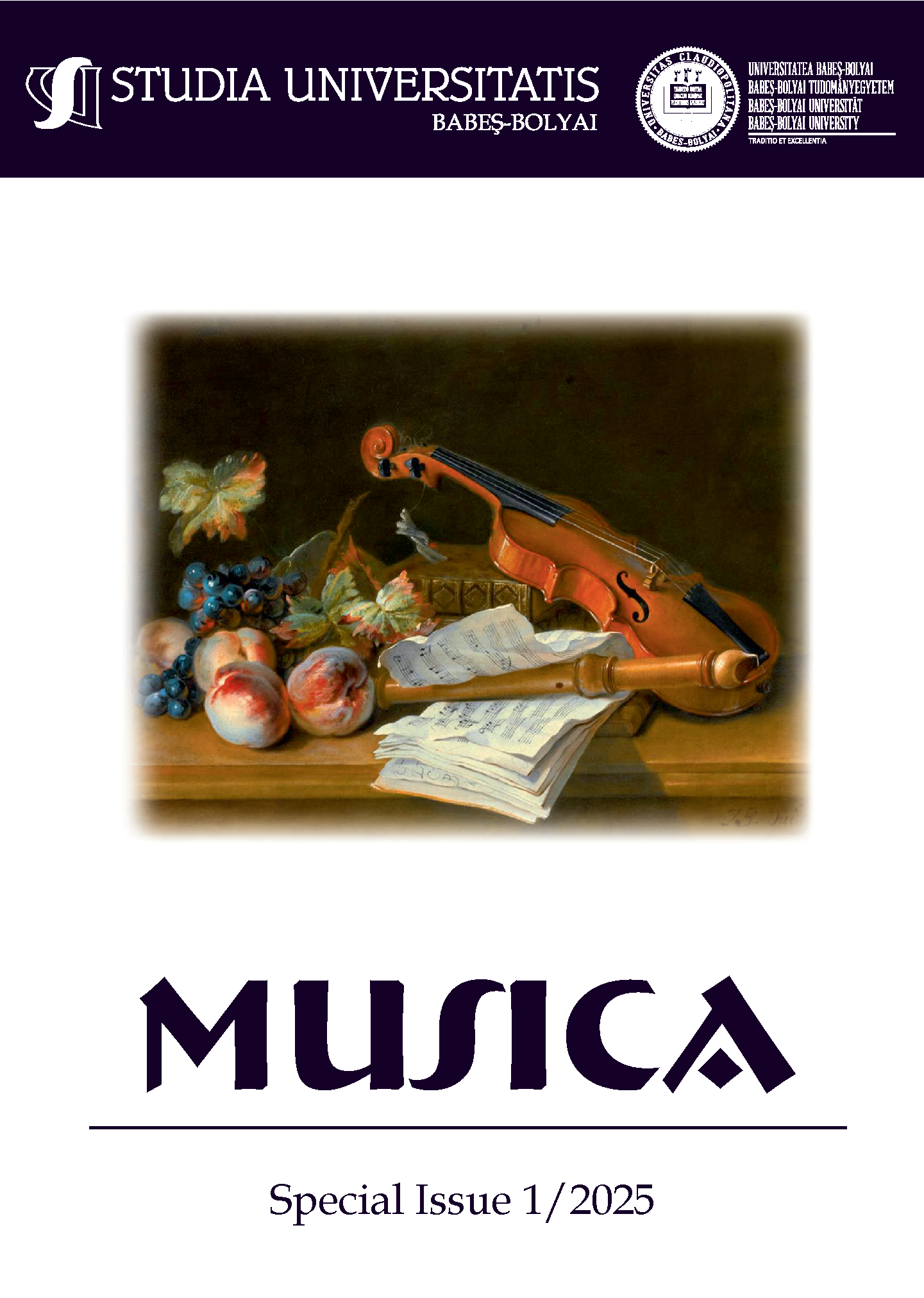CURRENT WAYS OF MELODICAL IMPROVISATION, REVOLUTIONARY JAZZ THINKING IN THE XXI ST CENTURY
DOI:
https://doi.org/10.24193/subbmusica.2025.spiss1.08Keywords:
jazz, improvisational thinking, instrumental technique, stylistic skills, contemporary harmonic structures, elements “inheritance”, resulting elementsAbstract
The assimilation of different musical practices, idioms or aesthetics is an expression that explains in detail the origins of some of the fusions of the significant creators of the jazz phenomenon, an active pursuit whose purpose is to create new, musically innovative, hybridized styles. It represents the modern view, a term for which researchers will suggest that it is a suitable description for the evolutionary compositional technique of certain artists adept at experimental practices of fusion of elements, the preferential ability to combine the structure of standard themes in a modern, original manner that takes on new forms, contrary to the traditional ways of tonal jazz. Musicians of the contemporary style articulate stylistically through unequal and variable musical combinations, which do not completely replace the previously known genre terms (jazz, rock, funk), but allow the emergence of other creative styles, which evolve, delight and continuously challenge the characteristics of the preceding categories. Modernism emphasizes the instability of all gender designations and highlights the creative fluidity, the structure of musical practices that gender names try to immortalize to give discussions about jazz, music in general a significant new starting point. Issuing the title of a musical genre (modernism) is a way of recognizing its existence and being able to distinguish it from other musical genres or styles. This (name) becomes a point of reference and easily allows the constitution of certain forms of interactive musical communication, control and specialization in the field, elaboration of templates, discussions, essentially a new evolutionary step.
References
Alumni@mDeckMusic. Music Books, Courses & Apps, for Musicians by Musicians, created by Berklee College of Music, Alumni, Improvising using motives, Coral Springs, Florida, U.S.A., 2021.
Apel, Willi. Harvard Dictionary of Music, The Belknap Press of Harvard University Press,1974, Cambridge, Massaschusetts, U.S.A.
Fernandez, Raul. Latin Jazz Combination Perfécta, Press and Society for Ethnomusicology, Vol.48, No.3, University of Illinois, Chicago, 2004.
Giuleanu, Victor. Tratat de teoria muzicii (Treatise on Music Theory), Editura Univers, București, 1986.
Hancock, Herbie. Solo Piano from the Piano, Tokyo, Chappel & Co. Inc., Print rights for Japan administrated by Yamaha Music Corporation, 1987.
Kennedy, Michael. Oxford Dictionary of Music, Oxford University Press, Oxford, 1980.
Levine, Mark. Jazz Piano Book, Sher Music Co., Petaluma, Cafornia, U.S.A., 1989.
Rees, Howard. The Barry Harris Workshop, Jazz Workshop Productions, N.Y.U., Artists House Foundation, New York, 2004.
Reilly, Jack. The Harmony of Bill Evans, Unichrom Ltd., Brooklyn, New York, U.S.A., 1992.
Slonimsky, Nicholas. Thesaurus of Scales and Melodic Pattern, Amsco Publications, New York, London, Paris, Sydney, 1975.
Downloads
Published
How to Cite
Issue
Section
License
Copyright (c) 2025 Studia Universitatis Babeş-Bolyai Musica

This work is licensed under a Creative Commons Attribution-NonCommercial-NoDerivatives 4.0 International License.



